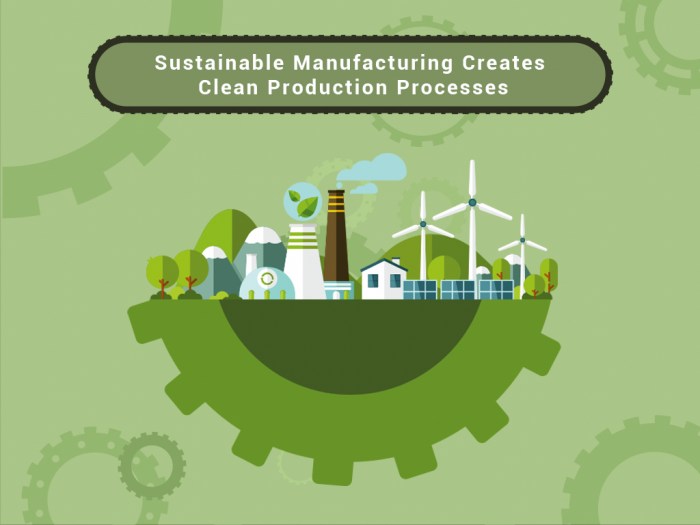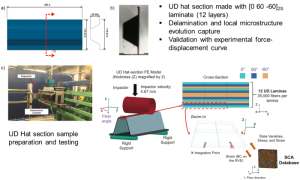
Step into the realm of Green industrial technologies where innovation meets sustainability, paving the way for a greener industrial landscape. From reducing carbon footprints to enhancing efficiency, let’s explore this cutting-edge field together!
Green Industrial Technologies
Green industrial technologies refer to sustainable practices and solutions implemented in industries to minimize environmental impact and promote resource efficiency. These technologies are crucial in today’s industrial landscape as companies strive to reduce their carbon footprint and operate in an environmentally responsible manner.
Examples of Green Industrial Technologies
- Renewable Energy Sources: Industries are increasingly adopting solar, wind, and hydroelectric power to reduce reliance on fossil fuels and decrease greenhouse gas emissions.
- Energy-Efficient Manufacturing Processes: Implementing energy-efficient equipment and optimizing production processes helps reduce energy consumption and waste generation in manufacturing facilities.
- Waste Management Solutions: Recycling, waste-to-energy technologies, and sustainable waste disposal methods are essential in minimizing the environmental impact of industrial activities.
- Water Conservation Technologies: Industries are investing in water recycling systems, efficient water usage practices, and wastewater treatment technologies to conserve this precious resource.
- Green Building Practices: Incorporating eco-friendly materials, energy-efficient design, and sustainable construction practices in industrial buildings helps reduce energy consumption and environmental impact.
Benefits of Green Industrial Technologies

Green industrial technologies offer numerous benefits for businesses looking to improve their operations while reducing their environmental impact. By adopting these sustainable practices, companies can not only contribute to a cleaner planet but also experience a range of advantages that directly impact their bottom line.
Cost Savings and Increased Efficiency
- Implementing energy-efficient technologies can lead to significant cost savings by reducing electricity consumption and waste.
- Optimizing production processes to minimize resource usage can lower operational expenses and improve overall efficiency.
- Utilizing renewable energy sources can help businesses reduce their reliance on fossil fuels, leading to long-term cost savings and a more sustainable operation.
Positive Impact on Employee Health and Well-being
- Reducing harmful emissions and pollutants in the workplace can create a healthier environment for employees, leading to improved overall well-being and productivity.
- Implementing green technologies can help minimize exposure to hazardous materials, promoting a safer work environment for all staff members.
- Enhancing indoor air quality through proper ventilation systems and green building practices can reduce the risk of respiratory issues and other health concerns among employees.
Implementation of Green Industrial Technologies
Implementing green industrial technologies can be a challenging task for companies looking to reduce their environmental impact and improve sustainability. There are various obstacles that organizations may face when trying to adopt these technologies in their industrial settings.One of the main challenges is the initial cost of implementing green technologies. Upgrading equipment, implementing new processes, and training employees can require a significant investment, which may deter some companies from making the switch.
Additionally, there may be resistance from employees who are comfortable with existing practices and are reluctant to change.To overcome these barriers, companies can develop a clear and comprehensive strategy for transitioning to green industrial technologies. This may involve conducting a thorough assessment of current practices, setting specific goals for reducing environmental impact, and securing buy-in from key stakeholders. Providing training and support for employees during the transition can also help to ensure successful implementation.Success stories of companies that have effectively integrated green industrial technologies into their operations can serve as inspiration for others looking to make similar changes.
By showcasing the benefits of these technologies, such as cost savings, improved efficiency, and reduced environmental impact, these companies can demonstrate the value of going green.
Strategies for Overcoming Barriers
- Develop a comprehensive transition plan with clear goals and milestones
- Secure buy-in from key stakeholders and provide training and support for employees
- Invest in energy-efficient equipment and technologies to reduce operational costs
- Monitor and measure progress towards sustainability goals to track success
Success Stories
- Company A reduced their carbon footprint by 30% after implementing solar panels and energy-efficient lighting in their manufacturing facilities
- Company B saved $100,000 annually by optimizing their production processes and reducing waste through the use of green technologies
- Company C improved their brand reputation and attracted new customers by promoting their commitment to sustainability through green initiatives
Industrial Goods and Services
Industrial goods and services play a crucial role in supporting various industries by providing the necessary tools, equipment, and expertise needed for smooth operations and production.
Types of Industrial Goods and Services
- Raw Materials: Essential components used in manufacturing processes, such as metals, plastics, and chemicals.
- Machinery and Equipment: Tools and machines needed for production, including conveyors, forklifts, and manufacturing robots.
- Industrial Supplies: Consumable items like lubricants, safety gear, and packaging materials required for daily operations.
- Maintenance and Repair Services: Services for fixing and maintaining industrial equipment to ensure optimal functionality.
- Consulting and Training: Expert advice and training programs to enhance productivity, efficiency, and safety in industrial settings.
Quality industrial goods and services are essential for businesses as they directly impact production efficiency, product quality, and overall operational success.
Applications Across Industries
- Manufacturing: Industrial goods and services are vital for producing goods in sectors like automotive, electronics, and food processing.
- Construction: Equipment, materials, and services support construction projects, from residential buildings to large infrastructure developments.
- Transportation: Industrial goods such as vehicle parts and maintenance services keep transportation systems running smoothly.
- Energy: Tools, machinery, and expertise are crucial for the production and distribution of energy resources like oil, gas, and renewable energy.
Concluding Remarks

As we conclude our journey through Green industrial technologies, it’s evident that these innovations offer a promising path towards a more sustainable future. Embracing these technologies not only benefits businesses but also our planet as a whole.
Common Queries
What are some examples of green industrial technologies?
Examples include renewable energy sources, energy-efficient manufacturing processes, and advanced waste management systems.
How can green industrial technologies benefit businesses financially?
By reducing energy costs, minimizing waste, and improving efficiency, businesses can see significant cost savings over time.
What challenges do companies face when implementing green industrial technologies?
Challenges may include initial investment costs, resistance to change, and finding skilled personnel to operate new technologies.
How do green industrial technologies impact employee health and well-being?
By creating a safer work environment, reducing exposure to harmful chemicals, and promoting a healthier workplace, these technologies contribute to employee well-being.





